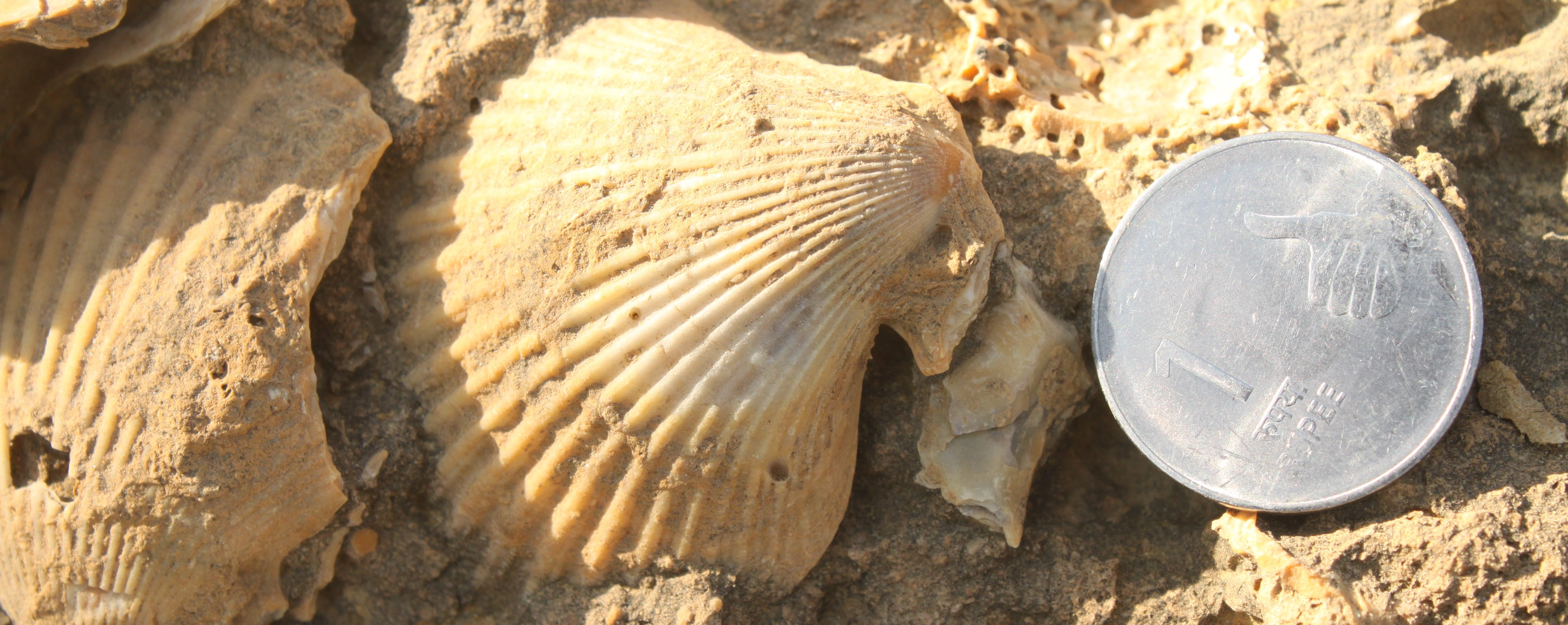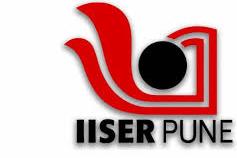The complete list is available here. Please contact devapriya @ iiserpune.ac.in for reprints.
* Student author
2025
39. Smith, J. A., Dowding, E. M., Abdelhady, A. A., Abondio, P., Araújo, R., Aze, T., ... & Kiessling, W. (2025). Identifying the Big Questions in paleontology: a community-driven project. Paleobiology, 1-24. pdf
38. Emma M. Dunne, Chattopadhyay, D., Christopher D. Dean, Erin M. Dillon, Elizabeth M. Dowding, Pedro L. Godoy, Jansen A. Smith and Nussaïbah B. Raja 2025. Data equity in paleobiology: progress, challenges, and future outlook, Paleobiology. Vol - 51, p. 237 - 249. pdf
37. Venu Gopal, K. *, Chattopadhyay, D., Dutta, S.* 2025. Oligo-Miocene marine bivalves from the Kutch Basin (western India) and their biogeographic implications in the context of Tethyan closure, Historical Biology. Vol - 34, p. 1–24. pdf
2024
36. Chattopadhyay, D., Nawrot, R., Zuschin, M. 2024. Inferring signature of past intra-predatory competition from drilling predation patterns: Insights from Red Sea and Adriatic Sea death assemblages, Palaios. Vol - 39, p. 264–276, doi: 10.2110/palo.2023.013
35. Chattopadhyay, D., Venu Gopal, K.*, Dahakey, A.* 2024. The effect of the Tethyan seaway closure on the Oligo-Miocene marine benthic diversity and distribution around Eurasia. Dupont-Nivet, G., Jonell, T. N., Dommain, R. and Clift, P. D. (eds) Asian Geodynamics, Climate and Biodiversity. Geological Society, London, Special Publications, 549(1), doi: 10.1144/SP549-2023-165
2023
34. Bhattacherjee, M.*, Chattopadhyay, D. 2023: Community evenness and sample size affect estimates of predation intensity and prey selection: A model-based validation. BIORXIV, doi: https://doi.org/10.1101/2022.07.18.500550
33. Bhattacherjee, M.*, Chattopadhyay, D. 2023: Controls of spatial grain size and environmental variables on observed beta diversity of molluscan assemblage at a regional scale. BIORXIV, doi: https://doi.org/10.1101/2022.11.02.514806
2022
32. Dutta, S.*, Chattopadhyay, D., 2022: Response of the Oligo-Miocene bivalve fauna of the Kutch Basin (Western India) to regional tectonic events. Palaios. Vol-37, p-73–87
31. Chandroth, A.*, Chattopadhyay, D., 2022: Micromorphy offers effective defence against predation: insights from the cost-benefit analyses of microgastropod predation record. Contributions from the Museum of Paleontology, University of Michigan, Vol-33, p- 63-81 pdf
30. Raja, N. B., Dunne, E. M., Matiwane, A., Khan, T. M., Nätscher, P. S., Ghilardi, A. M., Chattopadhyay, D., 2022: Colonial history and global economics distort our understanding of deep-time biodiversity. Nature Ecology & Evolution. Vol - 6, p- 145–154 pdf
2021
29. Chattopadhyay, D., Sarkar, D.*, Bhattacharjee, M.*, 2021: The distribution pattern of marine bivalve death assemblage from the western margin of Bay of Bengal and its oceanographic determinants. Frontiers in Marine Science. Vol-8, p-613 pdf
38. Bhattacherjee, M.*, Chattopadhyay, D., Som, B.*, Sankar, A. S. *, Mazumder, S. 2021: Molluscan live-dead fidelity of a storm-dominated shallow-marine setting and its implications. Palaios.Vol-36, p- 77-93
27. Chattopadhyay, D. Book Review: Actualistic Taphonomy in South America. Sergio Martínez, Alejandra Rojas, and Fernanda Cabrera (Eds.) 2020. 336 pp. Topics in Geobiology, Springer, Switzerland. ISBN 978-3-030-20624-6 (paper). ISBN 978-3-030-20625-3 (ebook). Ameghiniana, Vol-58, p-72-73
2020
26. Thangarathinam, V.*, Chattopadhyay, D.: Barnacle encrustation on molluscan prey offers associational resistance against drilling predation. BIORXIV/2020/139931
25. Chattopadhyay, D.*, Kella, VGS.*, Chattopadhyay, D. 2020: Effectiveness of small size against drilling predation: Insights from lower Miocene faunal assemblage of Quilon Limestone, India. Palaeogeography, Palaeoclimatology, Palaeoecology. Vol-551, p. 109742.
24. Dutta, S.*, Chattopadhyay, D., Chattopadhyay, D.*, Misra, S., Turchyn, A., 2019: Strontium stratigraphy of the Oligocene-early Miocene shellbeds of Kutch, western India and its implication. Lethaia. Vol-53, p- 382-395
2019
23. Klompmaker, A. A., Kelley, P. H., Chattopadhyay, D., Clements, J. C., Huntley, J. W., Kowalewski, M., 2019: Predation in the marine fossil record: Studies, data, recognition, environmental factors, and behavior. Earth-Science Reviews. Vol-194, p. 472-520.
22. Chattopadhyay, D.*, Chattopadhyay, D., 2019: Absence of general rules governing molluscan body-size response to climatic fluctuation during the Cenozoic. Historical Biology. Vol - 32, p- 1071-1080
21. Sarkar, D.*, Bhattacherjee, M.*, & Chattopadhyay, D., 2019: Influence of regional environment in guiding the spatial distribution of marine bivalves along the Indian coast. Journal of the Marine Biological Association of the United Kingdom. Vol - 99, p- 163-177. DOI:10.1017/S0025315417001837
2017
20. Nawrot, R., Albano, P., Chattopadhyay, D., Zuschin, M., 2017: Climate change and body size shift in Mediterranean bivalve assemblages: unexpected role of biological invasions. Proceedings of the Royal Society B-Biological Sciences. Vol-248, DOI: 10.1098/rspb.2017.0357
19. Chattopadhyay, D., 2017: Predation to climate change: what does a fossil shell tell us?, Current Science, Vol-112, p. 1489-1493 (Invited article)
2016
18. Chattopadhyay, D., Zuschin, M., Dominici, S., Sawyer, J. A., 2016: Patterns of drilling predation in relation to stratigraphy, locality and sieve size: Insights from the Eocene molluscan fauna of the Paris Basin. Palaeogeography, Palaeoclimatology, Palaeoecology. Vol-459, p. 86-98
2015
17. Chattopadhyay, D., Zuschin, M., Tomasovych, A., 2015: How effective are ecological traits against drilling predation? Insights from Recent bivalve assemblages of the northern Red Sea. Palaeogeography, Palaeoclimatology, Palaeoecology. Vol-440, p. 659-670
16. Nawrot, R., Chattopadhyay, D., Zuschin, M., 2015: What guides invasion success? Ecological correlates of arrival, establishment and spread of Red Sea bivalves in the Mediterranean Sea. Diversity and Distributions. Vol-21, p. 1075-1086
15. Das, S.*, Chattopadhyay, D., Chattopadhyay, D.*, 2015: The effect of hunger on drilling behaviour of Natica tigrina: An experimental assessment. Palaeogeography, Palaeoclimatology, Palaeoecology. Vol-429, p. 57-61
2014
14. Chattopadhyay, D., Sarkar, D.*, Dutta, S.*, Prasanjit, S. R.*, 2014: What controls cannibalism in drilling gastropods: A case study on Natica tigrina. Palaeogeography, Palaeoclimatology, Palaeoecology. Vol-410, p. 126-133
13. Chattopadhyay, D., Zuschin, M., Tomasovych, A. 2014: Effects of a high-risk environment on edge-drilling behavior: Inference from Recent bivalves from the Red Sea. Paleobiology. Vol-40, p. 34-49
2013
12. Chattopadhyay, D., Rathie, A.*, Miller, D., Baumiller, T. K. 2013: Hydrodynamic effects of drill holes on post-mortem transportation of bivalve shells and its taphonomic implications. Palaios. Vol-28, p. 875-884
11. Chattopadhyay, D., Rathie, A.*, Das, A.*, 2013: The effect of morphology on post-mortem transportation of bivalve and its taphonomic implications. Palaios. Vol-28, p. 203-209
10. Chattopadhyay, D., Dutta, S.*, 2013: Prey selection by drilling predators: A case study from Miocene of Kutch, India. Palaeogeography, Palaeoclimatology, Palaeoecology. Vol-374, p. 187-196
2012
9. Bardhan, S., Chattopadhyay, D., Mondal, S., Das, S., Mallick, S., Roy, A., Chanda, P. 2012: Record of intense predatory drilling from Upper Jurassic bivalves of Kutch, India: Implications for the history of biotic interaction. Palaeogeography, Palaeoclimatology, Palaeoecology, Vol. 317-318, p. 153-161
2011
8. Chattopadhyay, D., 2011: First evidence of predatory drilling from Upper Cretaceous Eutaw formation (Santonian), Georgia. Southeastern Geology.Vol-48, No.1, p.37-44
7. Chattopadhyay, D., 2011: Mussels: Their common enemies and adaptive defenses. In L. E. McGevin (Ed.) Mussels: Anatomy, habitat and Environmental impact. Chapter-23, pp. 503-520, Nova Science Publishers Inc., NY
Before 2011
6. Chattopadhyay, D., Baumiller, T. K. 2010: Effect of durophagy on drilling predation: A case study of Cenozoic molluscs from North America. Historical Biology. Vol-22, No.4, p.367-379
5. Chattopadhyay, D., Baumiller, T. K. 2009: An experimental assessment of penetration, excavation and consumption rates of the muricid gastropod, Nucella lamellosa. Journal of Shellfish Research. Vol-28, No. 4, p. 1-7
4. Casey, M., Chattopadhyay, D., 2008: Clumping behavior: an anti-predatory strategy against drilling predation, Journal of Experimental Marine Biology and Ecology, Vol-367, No. 2, p. 124-129.
3. Chattopadhyay, D., Baumiller, T. K. 2007: Drilling under threat: An experimental assessment of the drilling behavior of Nucella lamellosa in the presence of a predator. Journal of Experimental Marine Biology and Ecology, Vol-352, No. 1, p. 257-266
2. Chattopadhyay, D., 2004: New record of a coral-mollusca reefal community from the Early Tertiary of Kutch, Gujarat. Indian Minerals, Vol-58, No. 3 & 4, p. 169-182.
1. Bardhan, S.,Chattopadhyay, D., 2003: The mesozoic marine revolution: an overview of a biological "Arms race". Indian Journal of Earth Sciences, Vol-30, No.1-4, p.1-28


